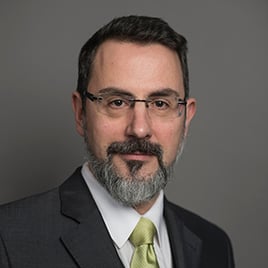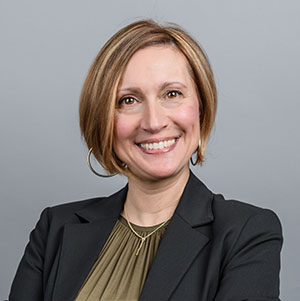HyFlex is a course design model that presents the components of hybrid learning in a flexible course structure that gives students the option of attending sessions in the classroom, participating online or doing both. Students can change their mode of attendance weekly or by topic, according to need or preference. Courses built on the HyFlex model help to break down the boundary between the virtual classroom and the physical one. By allowing students access to both platforms, the design encourages discussion threads to move from one platform to the other. - Edutech Wiki.
A hybrid learning system
Since it was developed at San Francisco State University in 2005, the HyFlex teaching model has been adopted at many institutions around the world, often seen as an effective ‘bridge’ to a more digitalized method of teaching in increasingly modern times. Like many education hubs, EHL had been working towards the gradual switch to blended learning or hybrid learning for some time, but the recent global health crisis and its resulting lockdown/hygiene measures have meant an acceleration of those plans.
More than just emergency remote teaching, the HyFlex system guarantees instructional continuity, flexibility and equity throughout the entirety of a program for all students. What had been scheduled for 2023 at EHL is now here to stay, not simply as a bridge but as the way towards a workable and attractive hybrid learning system. Why has EHL decided to use this model as its main teaching infrastructure? What are the pros and cons of the system from a technical and pedagogical perspective? Can it deliver? This article gathers viewpoints from EHL faculty members who are currently working on the implementation of this hybrid model and learning technologies as the new academic year unfolds.
INVEST IN EDUCATION TOOLKIT
With this 10-step process, you will have all the tools you need
to master the critical areas of a successful school.
1. The workings of HyFlex
“With HyFlex, it’s important is to establish the difference between the necessary technology (classroom equipment, tools, software, etc.) and the delivery (how the teacher is going to use these tools to deliver a learning experience). One is insufficient without the other. It’s also important to understand that HyFlex is a ‘system’, not a ‘platform’ (like, say, Microsoft Teams or Webex). HyFlex is a method of combining face to face (F2F) teaching with an equal online presence and it is implemented via the use of a platform.From the technological aspect, every classroom is equipped with a powerful microphone that picks up sound from all over the room, a wide-angled camera at the back of the classroom, a fixed laptop on the main desk and the teacher’s own laptop. It will then be up to each teacher’s imagination and creativity to use all these resources (and many others) to give the best experience to the students from a pedagogical and motivational perspective. I think the possibilities are endless, hence what is really fascinating about this new teaching system.” - Dr. Sébastien Fernandez – Associate Professor of Organizational Behavior.
 Dr. Sébastien Fernandez
Dr. Sébastien Fernandez
"My favorite metaphor for describing the HyFlex system is that of the teacher as a DJ, mixing between deck 1, classroom students, and deck 2, students online. The ‘DJ’ needs to know how to switch from one deck to the other, keeping the flow seamless and equally engaging for all the ‘dance floor’. Teachers need to plan meticulously in advance to cater for these two audiences. More course designing, back office preparation, changes to the delivery of certain exercises – all these are extra duties to be faced during the initial period of adjustment, (but thankfully they should be short term). Remote students also have the possibility of using the “mixer” and select what to pin on their desktop.
Another important HyFlex feature is the fact that lectures are recorded so that a student who has missed either classroom or online teaching session can still access the material. This is to support students who have been ill or who live in different time zones. However, HyFlex should be distinguished from online education, digital education or distance learning, which are completely different concepts and that is why the recorded sessions will only be available to students for a 24-hour period after the lecture.” Dr. Giuliano Bianchi – Professor of Economics.
 Dr. Giuliano Bianchi
Dr. Giuliano Bianchi
2. Sanitary measures
“The HyFlex teaching system distinguishes itself by being highly suited to the ‘new normal’ that all education establishments are currently facing. It addresses the sanitary and physical distancing measures, ensuring flexibility for managing the ratio of students online/on campus in the uncertainty of COVID-19 developments. Whatever its evolution, we have a back of house system in place to increase or reduce numbers at school; all semesters are represented on campus on a set day whatever the pandemic situation.
This combined model allows us to have enough people onsite to preserve the social part of the EHL learning experience. What happens outside the classroom has always been vital to our curriculum and we aim to keep this as intact as possible. It also permits us not to lose all the efforts made since the lockdown measures were introduced. Last semester saw fundamental changes where we learnt so much, it would be a waste to revert to how things were ‘before’ and not leverage our new-found awareness to the next level, i.e. the move towards blended and digital learning. It’s time to harness the tools for better and more efficient educational methods that suit the times we are currently living in.” Dr. Inès Blal – Executive Dean.
 Dr. Inès Blal
Dr. Inès Blal
3. Better class sizes
“Implementation of the HyFlex model was coming anyway. Many schools have been facing increasing student enrollments but have lacked the necessary new infrastructures to accommodate the intake. HyFlex is a solution to this mismatch: a way of providing online education whose offer has increased in recent years. Ironically, this system means less overwhelming classroom sizes. It allows the size of the class to be pedagogically optimal, no matter the number of students online. Teachers can keep that all-important, regular, on-campus contact with students on rotation.” Dr. Luciano Lopez – Assistant Professor of Economics.
 Dr. Luciano Lopez
Dr. Luciano Lopez
“From my personal experience, the reduction in the physical class size from 50-60 students to around 20 is a good thing since it reinforces the interaction among students AND between professor and students. I can’t deny that my workload will increase, there is certainly more multi-tasking required, but I anticipate in a positive way the weekly changes when the students rotate between on-campus and online. Last semester, I feared that my subject, Human Behavior, would be impossible to teach virtually, but after a period of adjustments, the use of regular role plays and remote students’ feedback has actually made it easier.” Dr. Sébastien Fernandez – Associate Professor of Organizational Behavior.
4. Flexibility
“The school had been planning to move out of certain old pedagogical systems, but because of the sudden COVID-19 circumstances, we decided to accelerate the existing digitization strategy. The HyFlex model is an agent for change and conviction, at once practical, fair and professional. It offers organized flexibility for both on-campus and remote learning, with the chance to catch up on anything missed within 24 hours.” Dr. Juan Perellon – Chief Academic Officer.

Dr. Juan Perellon
“As a finance teacher who is very sensitive to the issue of “risk management”, I very much appreciate the flexibility that HyFlex offers, i.e. if the pandemic situation improves (or worsens), we will be able to easily adapt and increase (or decrease) the number of students on campus. If necessary, we can smoothly shift from in-class to totally remote teaching.This systemallows teachersto be both in the classroom - where we are the most comfortable-whilstat the same time entering intothe world of more digitalized teaching.” Dr. Philippe Masset, Associate Professor of Finance.
 Dr. Philippe Masset
Dr. Philippe Masset
5. Pedagogical challenges
“On the ‘negative’ side, HyFlex require A LOT of teacher flexibility and positivity. It’s crucial not to marginalize the online/remote students, and hence the need to constantly devise tricks and methods to keep remote students engaged and involved. This will be hard and possibly frustrating at first but it’s important to stay positive and find solutions. HyFlex is certainly a change in education style but it’s not as extreme as a 100% online model. It should not be feared, rather taken on as an exciting professional challenge. With regards to the, at times, complicated technology, my most important piece of advice today is to simply book the classrooms and test like crazy!” Dr. Luciano Lopez – Assistant Professor of Economics.
“Once the technological logistics are in place, the deeper challenge is the pedagogical delivery. The hybrid model forces us to reassess the key fundamentals and shortcuts that were usually taken for granted in the traditional classroom setting – primarily, how to reconcile student engagement among the two audiences. This will be a hard code to crack. The challenge necessitates deep pedagogical expertise. Not to mention creative thinking and the acceptance of the trial and error margin. Clarity of purpose must underpin every teaching session, as well as strategic student activities that are both engaging and in line with assessment requirements.” Dr. Inès Blal – Executive Dean.
“As a professor of Economics, I think that HyFlex can be initially more challenging when teaching a ‘numbers’ subject. Because of the lack of immediate eye contact, it can be tempting to give more attention to the remote students to check that everything has been understood. This is where my professional challenge lies: to equally spread out my attention between both audiences and devise appropriate exercises that connect all parties. It’s a good idea to elect a classroom assistant who can moderate any questions coming in via the chat function from the remote students so that their input forms a constant feature of what’s being discussed in the classroom.” Dr. Giuliano Bianchi – Professor of Economics.
“Having half the students in the classroom and the other half remote represents a major challengefor finding an appropriate pace/dynamics/engagement that suits all. It will longerbe possible to walk around the classroom to check students’ computations.It will be difficult for the remote students to have 100% visibility of the white boardwhen I’m writing down formulas or drawing complex charts. My solution: using a tablet which I’m sure will help improve the integration between course material and course delivery.” Dr. Philippe Masset, Associate Professor of Finance.
6. HyFlex: the way forward
“Given the current circumstances, HyFlex encompasses the best of both teaching environments, offering flexibility between the physical and digital worlds. It’s undoubtedly a system that benefits the teacher who’s not scared of breaking with age-old tradition, in the spirit of the Charles Darwin phrase “Adapt or die!” This is the opportunity to learn new skills and forms of delivery, without ever looking back.” Dr. Sébastien Fernandez – Associate Professor of Organizational Behavior.
“HyFlex seems to be a rather evolutionary solution. In the medium/long-run, HyFlex will enable us to make the student’s learning experience more immersive (as this opens up many possibilities). I also believe that this move from traditional teaching to Hyflex represents an excellent opportunity for EHL faculty to enter into a new model of teaching. A way of transforming the current challenges into opportunities, and for us to reflect on our teaching and improve it.” Dr. Philippe Masset, Associate Professor of Finance.
“Coordination & team management needs to be tight with all the multiple stakeholders aligned around one clear objective: We are all working towards creating an excellent educational model where quality and efficiency of the learning experience is paramount. My expectation is for this system to open our minds to new ways of facilitating and initiating learning, to coach faculty into new roles and help create new types of curricula that better address the learners’ and employers’ needs.” Dr. Inès Blal – Executive Dean.
“This model will eventually lead to a larger digitalization of our Bachelors program, as well as the creation of a totally virtual campus dedicated to the principal of life-long-learning. In the pipeline is an exciting new pedagogical offshoot called EHL NEXT which aims to rethink our current curriculum, widening the spectrum of our hospitality education offering to a greater selection of students online. The plan is to create “real virtual classes” that will be “as real as possible and as virtual as necessary”, (a reference to the Swiss Health Minister's remark on how best to implement COVID-19 health measures: "As quickly as possible and as slowly as necessary”.)
The successful implementation of dynamic teaching systems such as HyFlex is what will lead the way to these new educational realities. As Victor Hugo wrote in ‘The Future of Man’: “Nothing else in the world…not all the armies…is so powerful as an idea whose time has come.” Dr. Juan Perellon – Chief Academic Officer.
7. What do the students say about HyFlex?
Finally, all of this hard work and preparation to implement a seamless HyFlex system would be in vain if it did not support the learning outcomes of the EHL students. EHL Advisory Sales & Marketing Manager and attendee of the MBA student Meet the Experts week, Catherine Rey, gave us her feedback following the week's fully online agenda.
With a group of more than 25 students connecting from different parts of the world: USA, Egypt, Bangkok, UEA, South America, Iceland, she said, "It was an extremely intense experience, a really immersive one. Even if we were not physically on campus and based in different parts of the world, we could get the feeling of belonging to the same cohort and going through a similar experience."
We worked on a group project all week, integrating the key information shared by the experts. I really enjoyed the dynamic workshops organized from day one to make us work closely with our peers. Splitting the cohort into separate smaller groups in breakout rooms, with experts joining the rooms to support the group work to guide us and give us feedback was a really good touch. Although online, we had a great feel for what is supposed to happen when we are on campus.
Catherine Rey continued: "The most challenging part was definitely the different time zones we were all in but it made the experience extremely intense and the bonding with the group even stronger. We will certainly remember this week as an intensive one and a great learning curve. We have been pushed to give our best and we could feel the work to organize such an experience behind. As a student we could feel how the learning was really focused on our progress and totally centered on us as individuals."





